Deck 24: Nonmetallic Elements and Their Compounds
Question
Question
Question
Question
Question
Question
Question
Question
Question
Question
Question
Question
Question
Question
Question
Question
Question
Question
Question
Question
Question
Question
Question
Question
Question
Question
Question
Question
Question
Question
Question
Question
Question
Question
Question
Question
Question
Question
Question
Question
Question
Question
Question
Question
Question
Question
Question
Question
Question
Question
Question
Question
Question
Question
Question
Question
Question
Question
Question
Question
Question
Question
Question
Question
Question
Question
Question
Question
Question
Question
Question
Question
Question
Question
Question
Question
Question
Question
Question
Question

Unlock Deck
Sign up to unlock the cards in this deck!
Unlock Deck
Unlock Deck
1/117
Play
Full screen (f)
Deck 24: Nonmetallic Elements and Their Compounds
1
The flotation process used in metallurgy involves
A) the roasting of sulfides.
B) separation of gangue from ore.
C) electrolytic reduction.
D) chemical reduction of a metal.
E) zone refining.
A) the roasting of sulfides.
B) separation of gangue from ore.
C) electrolytic reduction.
D) chemical reduction of a metal.
E) zone refining.
separation of gangue from ore.
2
The process of converting metal sulfides to metal oxides is called
A) roasting.
B) smelting.
C) flotation.
D) leaching.
E) sulfoxidation.
A) roasting.
B) smelting.
C) flotation.
D) leaching.
E) sulfoxidation.
roasting.
3
Alloying a metal is done to
A) make its extraction from its ore easier.
B) convert the metal to an oxide.
C) disguise the true identity of the metal.
D) prepare ultrapure metal samples.
E) enhance properties, like conductivity.
A) make its extraction from its ore easier.
B) convert the metal to an oxide.
C) disguise the true identity of the metal.
D) prepare ultrapure metal samples.
E) enhance properties, like conductivity.
enhance properties, like conductivity.
4
Volatile impurities are removed from ores by means of
A) roasting.
B) amalgamation.
C) electrolysis.
D) flotation.
E) zone refining.
A) roasting.
B) amalgamation.
C) electrolysis.
D) flotation.
E) zone refining.

Unlock Deck
Unlock for access to all 117 flashcards in this deck.
Unlock Deck
k this deck
5
The naturally occurring form of a metal that is concentrated enough to allow economical recovery of the metal is known as
A) an element.
B) a mineral.
C) gangue.
D) an ore.
E) an amalgam.
A) an element.
B) a mineral.
C) gangue.
D) an ore.
E) an amalgam.

Unlock Deck
Unlock for access to all 117 flashcards in this deck.
Unlock Deck
k this deck
6
Alloys of iron that contain 1.0-1.5% carbon and some manganese, phosphorus, silicon, and sulfur are called
A) steel.
B) cast iron.
C) coke.
D) pig iron.
E) hematite.
A) steel.
B) cast iron.
C) coke.
D) pig iron.
E) hematite.

Unlock Deck
Unlock for access to all 117 flashcards in this deck.
Unlock Deck
k this deck
7
The most common source for the commercial production of aluminum is called
A) aluminite.
B) hematite.
C) galena.
D) cinnabar.
E) bauxite.
A) aluminite.
B) hematite.
C) galena.
D) cinnabar.
E) bauxite.

Unlock Deck
Unlock for access to all 117 flashcards in this deck.
Unlock Deck
k this deck
8
Electrometallurgy uses ________ to separate a metal from its ore.
A) solid phase chemical properties
B) electrical processes
C) thermal processes
D) aqueous chemical processes
E) molten salt processes
A) solid phase chemical properties
B) electrical processes
C) thermal processes
D) aqueous chemical processes
E) molten salt processes

Unlock Deck
Unlock for access to all 117 flashcards in this deck.
Unlock Deck
k this deck
9
What is the source of most metals?
A) Industry
B) Synthesis
C) Saturated
D) Ocean floor
E) Minerals
A) Industry
B) Synthesis
C) Saturated
D) Ocean floor
E) Minerals

Unlock Deck
Unlock for access to all 117 flashcards in this deck.
Unlock Deck
k this deck
10
Nickel is often purified using
A) amalgamation.
B) the Hall process.
C) the Mond process.
D) pressurization.
E) a blast furnace.
A) amalgamation.
B) the Hall process.
C) the Mond process.
D) pressurization.
E) a blast furnace.

Unlock Deck
Unlock for access to all 117 flashcards in this deck.
Unlock Deck
k this deck
11
Pyrometallurgy uses ________ to separate a metal from its ore.
A) solid phase chemical properties
B) electrical processes
C) thermal processes
D) aqueous chemical processes
E) explosives
A) solid phase chemical properties
B) electrical processes
C) thermal processes
D) aqueous chemical processes
E) explosives

Unlock Deck
Unlock for access to all 117 flashcards in this deck.
Unlock Deck
k this deck
12
In the Hall process, ________ is reduced ________.
A) nickel; electrolytically
B) aluminum; electrolytically
C) nickel; by reaction with metallic sodium
D) aluminum; by reaction with metallic sodium
E) copper; electrolytically
A) nickel; electrolytically
B) aluminum; electrolytically
C) nickel; by reaction with metallic sodium
D) aluminum; by reaction with metallic sodium
E) copper; electrolytically

Unlock Deck
Unlock for access to all 117 flashcards in this deck.
Unlock Deck
k this deck
13
Which of these reactions represents the removal of silica from iron ore in a blast furnace?
A) SiO2(s) → SiO2(g)
B) SiO2(s) + CaO(s) → CaSiO3(l)
C) SiO2(s) + 4HF(g) → SiF4(g) + 2H2O(g)
D) SiO2(s) + C(s) → Si(l) + CO2(g)
E) SiO2(s) + CO(g) → SiCO3(l)
A) SiO2(s) → SiO2(g)
B) SiO2(s) + CaO(s) → CaSiO3(l)
C) SiO2(s) + 4HF(g) → SiF4(g) + 2H2O(g)
D) SiO2(s) + C(s) → Si(l) + CO2(g)
E) SiO2(s) + CO(g) → SiCO3(l)

Unlock Deck
Unlock for access to all 117 flashcards in this deck.
Unlock Deck
k this deck
14
The debris accompanying a mineral is called
A) slag.
B) gangue.
C) ore.
D) halite.
E) ash.
A) slag.
B) gangue.
C) ore.
D) halite.
E) ash.

Unlock Deck
Unlock for access to all 117 flashcards in this deck.
Unlock Deck
k this deck
15
Hydrometallurgy uses ________ to separate a metal from its ore.
A) solid phase chemical properties
B) electrical processes
C) thermal processes
D) aqueous chemical processes
E) molten salt processes
A) solid phase chemical properties
B) electrical processes
C) thermal processes
D) aqueous chemical processes
E) molten salt processes

Unlock Deck
Unlock for access to all 117 flashcards in this deck.
Unlock Deck
k this deck
16
Which is the principal reducing agent in a blast furnace?
A) CaO(s)
B) CaSiO3(l)
C) CO(g)
D) O2(g)
E) CO2(g)
A) CaO(s)
B) CaSiO3(l)
C) CO(g)
D) O2(g)
E) CO2(g)

Unlock Deck
Unlock for access to all 117 flashcards in this deck.
Unlock Deck
k this deck
17
The most common source for the commercial production of sodium is called
A) sodalite.
B) limestone.
C) halite.
D) galena.
E) pyrite.
A) sodalite.
B) limestone.
C) halite.
D) galena.
E) pyrite.

Unlock Deck
Unlock for access to all 117 flashcards in this deck.
Unlock Deck
k this deck
18
Which one of these normally would not be obtained by chemical reduction?
A) Fe
B) Ti
C) Zn
D) Mg
E) Ag
A) Fe
B) Ti
C) Zn
D) Mg
E) Ag

Unlock Deck
Unlock for access to all 117 flashcards in this deck.
Unlock Deck
k this deck
19
The process that selectively extracts a metal from its ore, by dissolving it, is called
A) roasting.
B) leaching.
C) smelting.
D) flotation.
E) hydration.
A) roasting.
B) leaching.
C) smelting.
D) flotation.
E) hydration.

Unlock Deck
Unlock for access to all 117 flashcards in this deck.
Unlock Deck
k this deck
20
What elements are alloyed to make stainless steel?
A) Fe and C
B) Fe and Mn
C) Fe and Ni
D) Fe and Cr
E) Fe, Cr, and Ni
A) Fe and C
B) Fe and Mn
C) Fe and Ni
D) Fe and Cr
E) Fe, Cr, and Ni

Unlock Deck
Unlock for access to all 117 flashcards in this deck.
Unlock Deck
k this deck
21
Electrolysis is used as the last step in isolating pure ________.
A) iron
B) boron
C) aluminum
D) selenium
E) carbon
A) iron
B) boron
C) aluminum
D) selenium
E) carbon

Unlock Deck
Unlock for access to all 117 flashcards in this deck.
Unlock Deck
k this deck
22
According to the band theory, a band is
A) an elastic force that holds electrons close to atoms in an insulator.
B) the energy gap associated with semiconductors.
C) a large number of molecular orbitals that are close together in energy.
D) a large number of atoms in a crystal.
A) an elastic force that holds electrons close to atoms in an insulator.
B) the energy gap associated with semiconductors.
C) a large number of molecular orbitals that are close together in energy.
D) a large number of atoms in a crystal.

Unlock Deck
Unlock for access to all 117 flashcards in this deck.
Unlock Deck
k this deck
23
Seawater is a good source of which of the following metals?
A) Cu
B) Au
C) Mg
D) Cl
E) Ca
A) Cu
B) Au
C) Mg
D) Cl
E) Ca

Unlock Deck
Unlock for access to all 117 flashcards in this deck.
Unlock Deck
k this deck
24
Basic properties are characteristic of all alkaline earth metal oxides except one. Which is the exception?
A) BeO
B) MgO
C) SO2
D) B2O3
E) CaO
A) BeO
B) MgO
C) SO2
D) B2O3
E) CaO

Unlock Deck
Unlock for access to all 117 flashcards in this deck.
Unlock Deck
k this deck
25
What is the major component in milk of magnesia?
A) Mg(OH)2
B) MgS
C) MgCl
D) MgSO4
E) MgCO3
A) Mg(OH)2
B) MgS
C) MgCl
D) MgSO4
E) MgCO3

Unlock Deck
Unlock for access to all 117 flashcards in this deck.
Unlock Deck
k this deck
26
What is the major component in limestone?
A) NaNO3
B) KCl
C) CaCl
D) BaSO4
E) CaCO3
A) NaNO3
B) KCl
C) CaCl
D) BaSO4
E) CaCO3

Unlock Deck
Unlock for access to all 117 flashcards in this deck.
Unlock Deck
k this deck
27
What effect does increasing temperature have on the conductivities of semiconductors?
A) Increases
B) Decreases
C) No change
D) Cannot be predicted
A) Increases
B) Decreases
C) No change
D) Cannot be predicted

Unlock Deck
Unlock for access to all 117 flashcards in this deck.
Unlock Deck
k this deck
28
In the production of potassium metal, the source of electrons in the reduction of K+ ions is
A) H2(g).
B) Na(g).
C) CO(g).
D) CaO(s).
E) electrolysis.
A) H2(g).
B) Na(g).
C) CO(g).
D) CaO(s).
E) electrolysis.

Unlock Deck
Unlock for access to all 117 flashcards in this deck.
Unlock Deck
k this deck
29
What is the chemical formula for gypsum?
A) CaSO4 • 2H2O
B) CaF2
C) MgSO4 • 5H2O
D) MgSO4 • 7H2O
E) CaCl2
A) CaSO4 • 2H2O
B) CaF2
C) MgSO4 • 5H2O
D) MgSO4 • 7H2O
E) CaCl2

Unlock Deck
Unlock for access to all 117 flashcards in this deck.
Unlock Deck
k this deck
30
Which two compounds are produced by the Solvay process?
A) CaCO3 and CaO
B) CaCO3 and Na2CO3
C) NaHCO3 and NaCl
D) NH3 and NH4Cl
E) NaHCO3 and Na2CO3
A) CaCO3 and CaO
B) CaCO3 and Na2CO3
C) NaHCO3 and NaCl
D) NH3 and NH4Cl
E) NaHCO3 and Na2CO3

Unlock Deck
Unlock for access to all 117 flashcards in this deck.
Unlock Deck
k this deck
31
Which of these elements when doped into silicon would give an n-type semiconductor?
A) C
B) Ga
C) P
D) Ge
E) B
A) C
B) Ga
C) P
D) Ge
E) B

Unlock Deck
Unlock for access to all 117 flashcards in this deck.
Unlock Deck
k this deck
32
What are two raw materials used in the Solvay process?
A) NaHCO3 and NaCl
B) CaCO3 and Na2CO3
C) NaCl and NaCO3
D) NH3 and NaCl
E) Na2CO3 and NH4Cl
A) NaHCO3 and NaCl
B) CaCO3 and Na2CO3
C) NaCl and NaCO3
D) NH3 and NaCl
E) Na2CO3 and NH4Cl

Unlock Deck
Unlock for access to all 117 flashcards in this deck.
Unlock Deck
k this deck
33
Calcium oxide is added to molten iron in the production of carbon steel in order to
A) convert silicon and phosphorus oxides to slag which can be decanted from the molten steel.
B) serve as a scrubber to remove sulfur dioxide from the gases leaving the furnace.
C) remove any traces of acid which could weaken the steel.
D) add a small amount of oxygen to the steel to prevent corrosion and increase its strength.
E) create gangue.
A) convert silicon and phosphorus oxides to slag which can be decanted from the molten steel.
B) serve as a scrubber to remove sulfur dioxide from the gases leaving the furnace.
C) remove any traces of acid which could weaken the steel.
D) add a small amount of oxygen to the steel to prevent corrosion and increase its strength.
E) create gangue.

Unlock Deck
Unlock for access to all 117 flashcards in this deck.
Unlock Deck
k this deck
34
In n-type semiconductors
A) the energy gap between the valence band and the conduction band is very large.
B) impurities that donate electrons are added to provide conduction electrons.
C) a valence band overlaps the empty conduction band.
D) impurities that provide "positive holes" are added to a pure semiconductor.
A) the energy gap between the valence band and the conduction band is very large.
B) impurities that donate electrons are added to provide conduction electrons.
C) a valence band overlaps the empty conduction band.
D) impurities that provide "positive holes" are added to a pure semiconductor.

Unlock Deck
Unlock for access to all 117 flashcards in this deck.
Unlock Deck
k this deck
35
The alkali metals are isolated from nonaqueous systems. Why is this necessary?
A) The electrolysis of aqueous solutions of the alkali metals requires more energy than electrolysis of the molten salts.
B) The dissolved alkali earth halides are too reactive to be electrolyzed.
C) The aqueous metal ions are more difficult to reduce than water.
D) The reduction potentials of the alkali metals are more positive than the reduction potential of water.
E) The aqueous metal ions react violently with water.
A) The electrolysis of aqueous solutions of the alkali metals requires more energy than electrolysis of the molten salts.
B) The dissolved alkali earth halides are too reactive to be electrolyzed.
C) The aqueous metal ions are more difficult to reduce than water.
D) The reduction potentials of the alkali metals are more positive than the reduction potential of water.
E) The aqueous metal ions react violently with water.

Unlock Deck
Unlock for access to all 117 flashcards in this deck.
Unlock Deck
k this deck
36
What is the name of the relationship that exists because of the similar properties of carbon to phosphorus and nitrogen to sulfur?
A) A diagonal relationship
B) The periodic law
C) Amphoterism
D) An isoelectronic relationship
E) An allotropic relationship
A) A diagonal relationship
B) The periodic law
C) Amphoterism
D) An isoelectronic relationship
E) An allotropic relationship

Unlock Deck
Unlock for access to all 117 flashcards in this deck.
Unlock Deck
k this deck
37
Which one of these elements would give a p-type semiconductor when added to a silicon crystal?
A) C
B) P
C) As
D) Ga
E) Sb
A) C
B) P
C) As
D) Ga
E) Sb

Unlock Deck
Unlock for access to all 117 flashcards in this deck.
Unlock Deck
k this deck
38
Cryolite, Na3AlF6, is used in the electrolysis of aluminum oxide because
A) it is a good source of fluoride ions.
B) it reduces the energy requirement of the process, due to its low melting point.
C) it provides a source of fluorine, an oxidizing agent.
D) it provides a source of sodium, a reducing agent.
E) it is very soluble in water.
A) it is a good source of fluoride ions.
B) it reduces the energy requirement of the process, due to its low melting point.
C) it provides a source of fluorine, an oxidizing agent.
D) it provides a source of sodium, a reducing agent.
E) it is very soluble in water.

Unlock Deck
Unlock for access to all 117 flashcards in this deck.
Unlock Deck
k this deck
39
According to the band theory, which of these statements provide(s) an explanation for the high electrical conductivity of metals? I. a completely filled conduction bandII. a valence band overlapping an empty conduction bandIII. a filled valence bandIV. a large gap between the valence band and the conduction band
A) II
B) I and III
C) III
D) III and IV
E) IV
A) II
B) I and III
C) III
D) III and IV
E) IV

Unlock Deck
Unlock for access to all 117 flashcards in this deck.
Unlock Deck
k this deck
40
Where on the periodic table are the most reactive metals located?
A) Group IA (alkali metals)
B) Group IA (alkaline earth metals)
C) Group IIA (alkali metals)
D) Group IIA (alkaline earth metals)
E) Group VIIA (halogens)
A) Group IA (alkali metals)
B) Group IA (alkaline earth metals)
C) Group IIA (alkali metals)
D) Group IIA (alkaline earth metals)
E) Group VIIA (halogens)

Unlock Deck
Unlock for access to all 117 flashcards in this deck.
Unlock Deck
k this deck
41
Aluminum is an active metal, but does not corrode as iron does because
A) Al does not react with O2 .
B) a protective layer of Al2O3 forms on the metal surface.
C) Al is harder to oxidize than is Fe.
D) the enthalpy of formation of aluminum oxide is negative.
E) aluminum has a high tensile strength.
A) Al does not react with O2 .
B) a protective layer of Al2O3 forms on the metal surface.
C) Al is harder to oxidize than is Fe.
D) the enthalpy of formation of aluminum oxide is negative.
E) aluminum has a high tensile strength.

Unlock Deck
Unlock for access to all 117 flashcards in this deck.
Unlock Deck
k this deck
42
Which is a covalent oxide?
A) CaO
B) Na2O
C) Li2O
D) Cs2O
E) BeO
A) CaO
B) Na2O
C) Li2O
D) Cs2O
E) BeO

Unlock Deck
Unlock for access to all 117 flashcards in this deck.
Unlock Deck
k this deck
43
The final step of the purification of copper involves electrorefining in which copper is separated from nickel and iron by being reduced at the cathode of a cell. Why are nickel and iron not reduced?
A) Their reduction potentials are more positive than copper's.
B) Their reduction potentials are more negative than copper's.
C) They cannot be deposited on a copper electrode.
D) Their reduction potentials are more negative than water's.
E) Their reduction requires large overvoltages.
A) Their reduction potentials are more positive than copper's.
B) Their reduction potentials are more negative than copper's.
C) They cannot be deposited on a copper electrode.
D) Their reduction potentials are more negative than water's.
E) Their reduction requires large overvoltages.

Unlock Deck
Unlock for access to all 117 flashcards in this deck.
Unlock Deck
k this deck
44
The Hall process refers to
A) the production of aluminum by electrolysis.
B) the recovery of sulfur from underground deposits.
C) the manufacture of sulfuric acid.
D) the production of ammonia from nitrogen and hydrogen gases.
E) the isolation of Al2O3 from bauxite.
A) the production of aluminum by electrolysis.
B) the recovery of sulfur from underground deposits.
C) the manufacture of sulfuric acid.
D) the production of ammonia from nitrogen and hydrogen gases.
E) the isolation of Al2O3 from bauxite.

Unlock Deck
Unlock for access to all 117 flashcards in this deck.
Unlock Deck
k this deck
45
Which is an example of a basic oxide?
A) SO3(g)
B) BaO(s)
C) Al2O3(s)
D) Fe2O3(s)
E) SiO2(s)
A) SO3(g)
B) BaO(s)
C) Al2O3(s)
D) Fe2O3(s)
E) SiO2(s)

Unlock Deck
Unlock for access to all 117 flashcards in this deck.
Unlock Deck
k this deck
46
Magnesium reacts with dilute hydrochloric acid according to which of these equations?
A) Mg + 2HCl → 2H+ + MgCl
B) Mg + 2HCl → H2 + MgCl2
C) Mg + 2HCl → Cl2 + MgH2
D) Mg + 2HCl → Cl2 + Mg2+ + 2H+
A) Mg + 2HCl → 2H+ + MgCl
B) Mg + 2HCl → H2 + MgCl2
C) Mg + 2HCl → Cl2 + MgH2
D) Mg + 2HCl → Cl2 + Mg2+ + 2H+

Unlock Deck
Unlock for access to all 117 flashcards in this deck.
Unlock Deck
k this deck
47
Which statement is not correct?
A) Aluminum has a low density versus other metals.
B) Al(OH)3 is an amphoteric compound.
C) Metallic aluminum is toxic to humans.
D) Aluminum is very reactive with oxygen.
E) Metallic aluminum conducts electricity.
A) Aluminum has a low density versus other metals.
B) Al(OH)3 is an amphoteric compound.
C) Metallic aluminum is toxic to humans.
D) Aluminum is very reactive with oxygen.
E) Metallic aluminum conducts electricity.

Unlock Deck
Unlock for access to all 117 flashcards in this deck.
Unlock Deck
k this deck
48
_____ consists of potassium nitrate, wood charcoal, and sulfur.
A) Salt peter
B) Chile salt peter
C) Carborundum
D) Gunpowder
E) Anglesite
A) Salt peter
B) Chile salt peter
C) Carborundum
D) Gunpowder
E) Anglesite

Unlock Deck
Unlock for access to all 117 flashcards in this deck.
Unlock Deck
k this deck
49
The mineral cryolite, Na3AlF6, is used in the Hall process for aluminum production as
A) the source of aluminum (the ore).
B) a chemical reducing agent.
C) a material that forms a slag and thus removes impurities.
D) a solvent for alumina, Al2O3.
A) the source of aluminum (the ore).
B) a chemical reducing agent.
C) a material that forms a slag and thus removes impurities.
D) a solvent for alumina, Al2O3.

Unlock Deck
Unlock for access to all 117 flashcards in this deck.
Unlock Deck
k this deck
50
What is the molecular shape of AlF3?
A) Tetrahedral
B) Linear
C) Trigonal pyramidal
D) Square planar
E) Trigonal planar
A) Tetrahedral
B) Linear
C) Trigonal pyramidal
D) Square planar
E) Trigonal planar

Unlock Deck
Unlock for access to all 117 flashcards in this deck.
Unlock Deck
k this deck
51
Which reaction is a good small-scale laboratory method for the preparation of hydrogen?
A) CH4(g) + H2O(g) → CO(g) + 3H2(g)
B) 3FeCl2(s) + 4H2O(g) → Fe3O4(s) + 6HCl(g) + H2(g)
C) NaH(s) + H2O(l) → NaOH(aq) + H2(g)
D) CO(g) + H2O(g) → CO2(g) + H2(g)
E) None of these methods is useful.
A) CH4(g) + H2O(g) → CO(g) + 3H2(g)
B) 3FeCl2(s) + 4H2O(g) → Fe3O4(s) + 6HCl(g) + H2(g)
C) NaH(s) + H2O(l) → NaOH(aq) + H2(g)
D) CO(g) + H2O(g) → CO2(g) + H2(g)
E) None of these methods is useful.

Unlock Deck
Unlock for access to all 117 flashcards in this deck.
Unlock Deck
k this deck
52
In gunpowder, which component is present in the highest percent by mass?
A) Wood charcoal
B) Chile salt peter
C) Potassium nitrate
D) Sulfur
E) Ammonia
A) Wood charcoal
B) Chile salt peter
C) Potassium nitrate
D) Sulfur
E) Ammonia

Unlock Deck
Unlock for access to all 117 flashcards in this deck.
Unlock Deck
k this deck
53
Which undergoes electrolysis to form calcium metal?
A) Ca(OH)2
B) Ca(NO3)2
C) CaI2
D) CaF2
E) CaCl2
A) Ca(OH)2
B) Ca(NO3)2
C) CaI2
D) CaF2
E) CaCl2

Unlock Deck
Unlock for access to all 117 flashcards in this deck.
Unlock Deck
k this deck
54
Which statement is not correct?
A) Aluminum hydroxide can act as a Lewis acid.
B) Aluminum hydroxide can act as a base.
C) Aluminum hydroxide is amphoteric.
D) Aluminum hydroxide can ONLY act as a base.
A) Aluminum hydroxide can act as a Lewis acid.
B) Aluminum hydroxide can act as a base.
C) Aluminum hydroxide is amphoteric.
D) Aluminum hydroxide can ONLY act as a base.

Unlock Deck
Unlock for access to all 117 flashcards in this deck.
Unlock Deck
k this deck
55
The Hall process involves the reduction of Al2O3 to aluminum by
A) carbon (coke).
B) carbon monoxide.
C) molecular hydrogen.
D) sodium.
E) electrolysis.
A) carbon (coke).
B) carbon monoxide.
C) molecular hydrogen.
D) sodium.
E) electrolysis.

Unlock Deck
Unlock for access to all 117 flashcards in this deck.
Unlock Deck
k this deck
56
The process used to produce metals with a purity of more than 99.99% is called
A) zone refining.
B) electrorefining.
C) distillation.
D) sublimation.
E) alloying.
A) zone refining.
B) electrorefining.
C) distillation.
D) sublimation.
E) alloying.

Unlock Deck
Unlock for access to all 117 flashcards in this deck.
Unlock Deck
k this deck
57
The Downs cell is used in the production of
A) copper.
B) hydrogen.
C) iron.
D) magnesium.
E) sodium.
A) copper.
B) hydrogen.
C) iron.
D) magnesium.
E) sodium.

Unlock Deck
Unlock for access to all 117 flashcards in this deck.
Unlock Deck
k this deck
58
In the production of aluminum, bauxite is heated with sodium hydroxide solution to ________.
A) remove titanium(IV) oxide
B) remove silica
C) remove iron oxides
D) remove potassium
E) remove fluorides
A) remove titanium(IV) oxide
B) remove silica
C) remove iron oxides
D) remove potassium
E) remove fluorides

Unlock Deck
Unlock for access to all 117 flashcards in this deck.
Unlock Deck
k this deck
59
Which of these ions is most likely to substitute for Ca2+ in the human body?
A) Cl-
B) Sr2+
C) K+
D) S2-
E) Pb2+
A) Cl-
B) Sr2+
C) K+
D) S2-
E) Pb2+

Unlock Deck
Unlock for access to all 117 flashcards in this deck.
Unlock Deck
k this deck
60
Which metal's commercial source is seawater?
A) Cs
B) K
C) Mg
D) Ba
E) Li
A) Cs
B) K
C) Mg
D) Ba
E) Li

Unlock Deck
Unlock for access to all 117 flashcards in this deck.
Unlock Deck
k this deck
61
What is the chemical formula for talc?
A) NaNO3
B) Mg3(PO4)2
C) CaCO3
D) Mg3(Si4O10)(OH)2
E) Ca3(PO4)2
A) NaNO3
B) Mg3(PO4)2
C) CaCO3
D) Mg3(Si4O10)(OH)2
E) Ca3(PO4)2

Unlock Deck
Unlock for access to all 117 flashcards in this deck.
Unlock Deck
k this deck
62
What type of metal is generally separated using a strong electromagnet?
A) ferromagnetic
B) oxide
C) alkaline
D) uncombined
A) ferromagnetic
B) oxide
C) alkaline
D) uncombined

Unlock Deck
Unlock for access to all 117 flashcards in this deck.
Unlock Deck
k this deck
63
The following electrolytic cell is a representation of the process used to purify copper metal. How does it work? 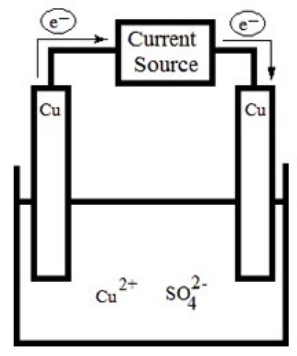
A) Impure copper is oxidized at the anode, and pure copper is reduced at the cathode. Impurities dissolve into solution.
B) Impure copper is oxidized at the cathode, and pure copper is reduced at the anode. Impurities dissolve into solution.
C) Impure copper is oxidized at the anode, and pure copper dissolves into solution. Impurities remain on the cathode.
D) Impure copper is oxidized at the cathode, and pure copper dissolves into solution. Impurities remain on the anode.
E) Impure copper precipitates from solution onto the cathode, and pure copper remains on the anode.

A) Impure copper is oxidized at the anode, and pure copper is reduced at the cathode. Impurities dissolve into solution.
B) Impure copper is oxidized at the cathode, and pure copper is reduced at the anode. Impurities dissolve into solution.
C) Impure copper is oxidized at the anode, and pure copper dissolves into solution. Impurities remain on the cathode.
D) Impure copper is oxidized at the cathode, and pure copper dissolves into solution. Impurities remain on the anode.
E) Impure copper precipitates from solution onto the cathode, and pure copper remains on the anode.

Unlock Deck
Unlock for access to all 117 flashcards in this deck.
Unlock Deck
k this deck
64
What is the chemical formula for phosphate rock?
A) Na3PO4
B) Na3P
C) Mg3(PO4)2
D) AlPO4
E) Ca3(PO4)2
A) Na3PO4
B) Na3P
C) Mg3(PO4)2
D) AlPO4
E) Ca3(PO4)2

Unlock Deck
Unlock for access to all 117 flashcards in this deck.
Unlock Deck
k this deck
65
Which mineral contains calcium as a major element?
A) Cinnabar
B) Corundum
C) Hematite
D) Hydroxyapatite
E) Talc
A) Cinnabar
B) Corundum
C) Hematite
D) Hydroxyapatite
E) Talc

Unlock Deck
Unlock for access to all 117 flashcards in this deck.
Unlock Deck
k this deck
66
When mercury combines with other metals, what is the name given to the species formed?
A) Mercury complex
B) Mercury poison
C) Amalgam
D) Mineralization
E) Mercuration
A) Mercury complex
B) Mercury poison
C) Amalgam
D) Mineralization
E) Mercuration

Unlock Deck
Unlock for access to all 117 flashcards in this deck.
Unlock Deck
k this deck
67
What is the chemical formula for limestone?
A) LiOH
B) Li2CO3
C) CaCO3
D) BaCO3
E) Ca3(PO4)2
A) LiOH
B) Li2CO3
C) CaCO3
D) BaCO3
E) Ca3(PO4)2

Unlock Deck
Unlock for access to all 117 flashcards in this deck.
Unlock Deck
k this deck
68
Which is the best representation for a solution composed of sodium dissolved in liquid ammonia? (Ammonia molecules have been omitted for clarity.)
A)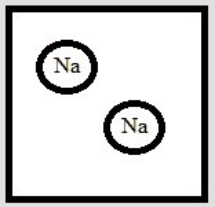
B)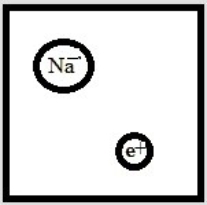
C)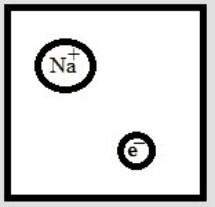
D)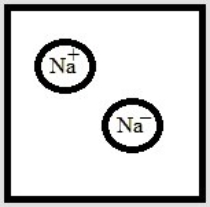
E)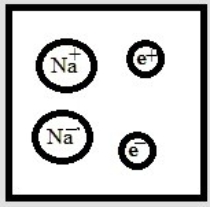
A)

B)

C)

D)

E)


Unlock Deck
Unlock for access to all 117 flashcards in this deck.
Unlock Deck
k this deck
69
Which mineral is not a silicate?
A) Zircon
B) Beryl
C) Smithsonite
D) Albite
E) Talc
A) Zircon
B) Beryl
C) Smithsonite
D) Albite
E) Talc

Unlock Deck
Unlock for access to all 117 flashcards in this deck.
Unlock Deck
k this deck
70
Which diagram best corresponds to the energy level diagram of a metal?
A)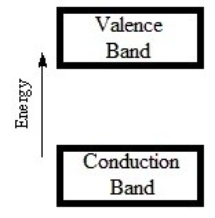
B)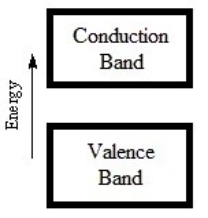
C)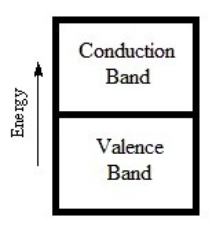
D)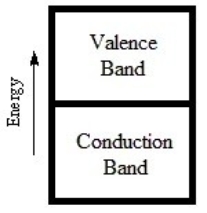
A)

B)

C)

D)


Unlock Deck
Unlock for access to all 117 flashcards in this deck.
Unlock Deck
k this deck
71
The first step in the purification of a metal M is represented by the following figure. To which process does the figure correspond, and which metal is usually purified by this process? 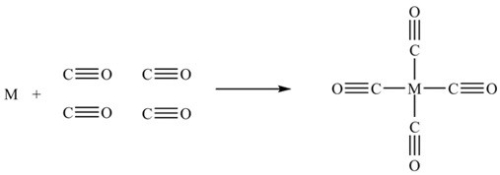
A) The Mond process, for the purification of Zn
B) The Mond process, for the purification of Ni
C) The Hall process, for the purification of Al
D) The Hall process, for the purification of Cr
E) The zone refining process, for the purification of Fe

A) The Mond process, for the purification of Zn
B) The Mond process, for the purification of Ni
C) The Hall process, for the purification of Al
D) The Hall process, for the purification of Cr
E) The zone refining process, for the purification of Fe

Unlock Deck
Unlock for access to all 117 flashcards in this deck.
Unlock Deck
k this deck
72
Which diagram best corresponds to the energy level diagram of a semiconductor?
A)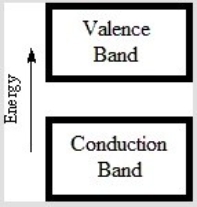
B)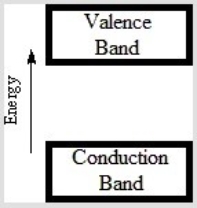
C)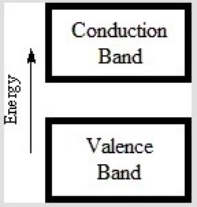
D)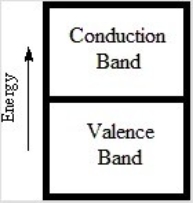
E)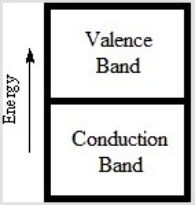
A)

B)

C)

D)

E)


Unlock Deck
Unlock for access to all 117 flashcards in this deck.
Unlock Deck
k this deck
73
A fractional distillation method called the Mond process is used to purify nickel.

Unlock Deck
Unlock for access to all 117 flashcards in this deck.
Unlock Deck
k this deck
74
What is the name of the process used to separate the minerals from the waste in ore?
A) Gangue
B) Mining
C) Fetching
D) Flotation
E) Mineral drawing
A) Gangue
B) Mining
C) Fetching
D) Flotation
E) Mineral drawing

Unlock Deck
Unlock for access to all 117 flashcards in this deck.
Unlock Deck
k this deck
75
Which is NOT a chemical reaction that occurs in a blast furnace in the production of iron?
A) CaCO3(s) → CaO(s) + CO2(g)
B) 3Fe2O3(s) + CO(g) → 2Fe3O4(s) + CO2(g)
C) 2FeO(s) + CO(g) → Fe2O3(s) + C(s)
D) Fe3O4(s) + CO(g) → 3FeO(s) + CO2(g)
E) FeO(s) + CO(g) → Fe(l) + CO2(g)
A) CaCO3(s) → CaO(s) + CO2(g)
B) 3Fe2O3(s) + CO(g) → 2Fe3O4(s) + CO2(g)
C) 2FeO(s) + CO(g) → Fe2O3(s) + C(s)
D) Fe3O4(s) + CO(g) → 3FeO(s) + CO2(g)
E) FeO(s) + CO(g) → Fe(l) + CO2(g)

Unlock Deck
Unlock for access to all 117 flashcards in this deck.
Unlock Deck
k this deck
76
Which mineral is not a carbonate?
A) Witherite
B) Sylvite
C) Smithsonite
D) Cerussite
E) Calcite
A) Witherite
B) Sylvite
C) Smithsonite
D) Cerussite
E) Calcite

Unlock Deck
Unlock for access to all 117 flashcards in this deck.
Unlock Deck
k this deck
77
Which mineral is a silicate?
A) Cinnabar
B) Corundum
C) Smithsonite
D) Hydroxyapatite
E) Talc
A) Cinnabar
B) Corundum
C) Smithsonite
D) Hydroxyapatite
E) Talc

Unlock Deck
Unlock for access to all 117 flashcards in this deck.
Unlock Deck
k this deck
78
Which ion is not found in sea water in a concentration high enough to be an industrial source of the metal?
A) Ca2+
B) Mg2+
C) Na+
D) K+
E) Ag+
A) Ca2+
B) Mg2+
C) Na+
D) K+
E) Ag+

Unlock Deck
Unlock for access to all 117 flashcards in this deck.
Unlock Deck
k this deck
79
What is the chemical formula for cinnabar?
A) HgS
B) SnBr
C) SnO2
D) TiO2
E) SnBr4
A) HgS
B) SnBr
C) SnO2
D) TiO2
E) SnBr4

Unlock Deck
Unlock for access to all 117 flashcards in this deck.
Unlock Deck
k this deck
80
For the production of metallic chromium at high temperatures, which is NOT an appropriate choice for the metal M?Cr2O3(s) + 3M(l) → 2Cr(l) + 3MO(s)
A) Mg
B) Sn
C) Ca
D) Cu
E) Sr
A) Mg
B) Sn
C) Ca
D) Cu
E) Sr

Unlock Deck
Unlock for access to all 117 flashcards in this deck.
Unlock Deck
k this deck



